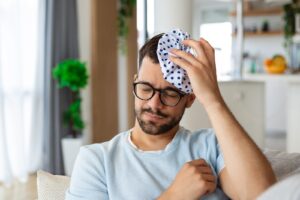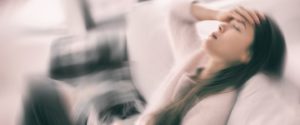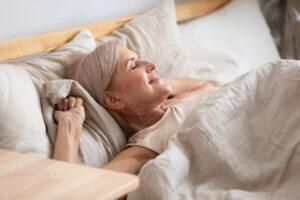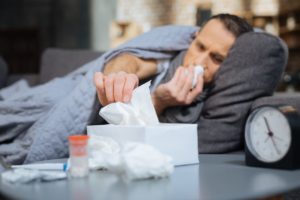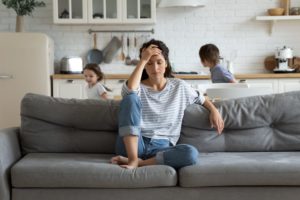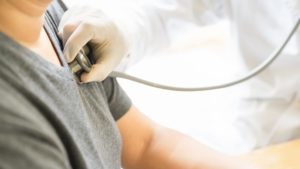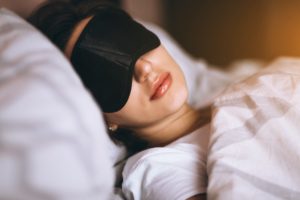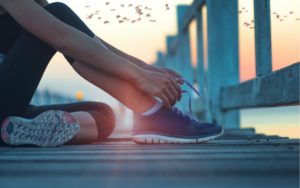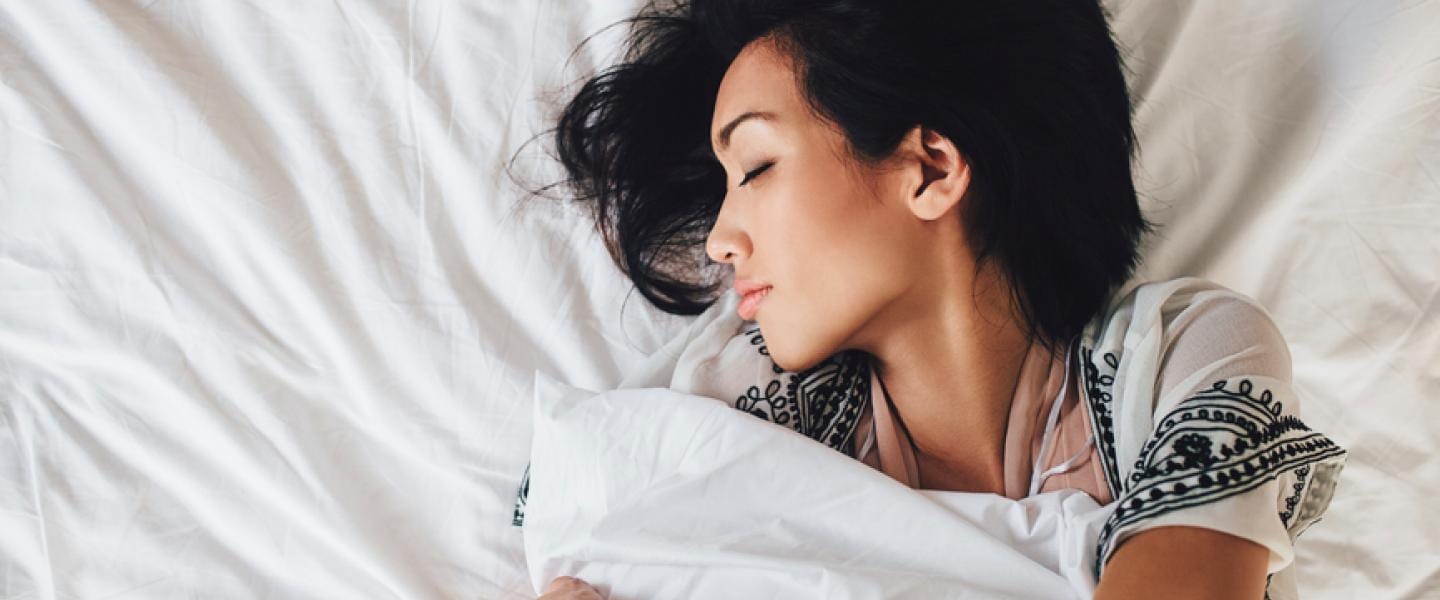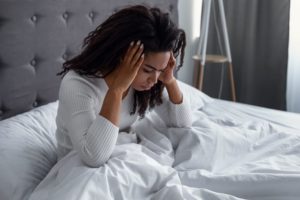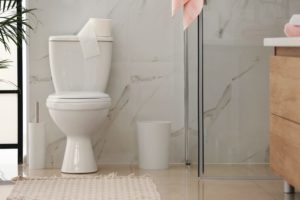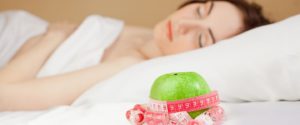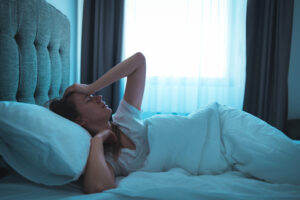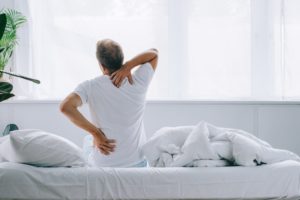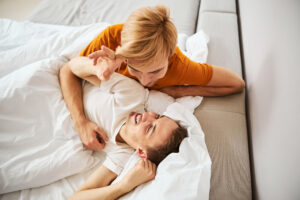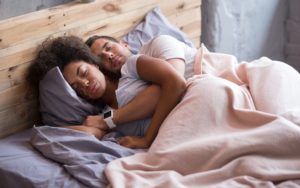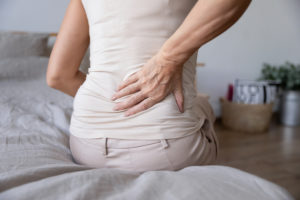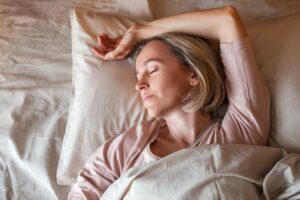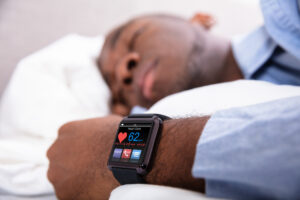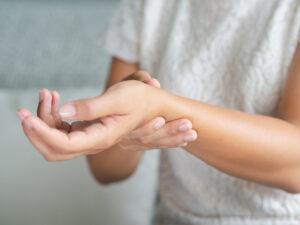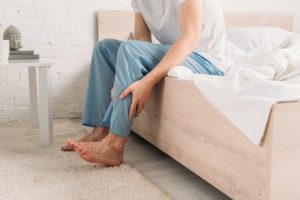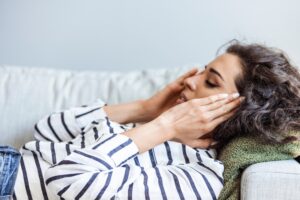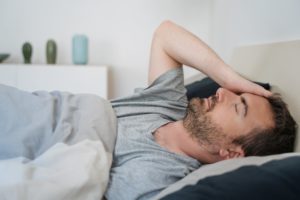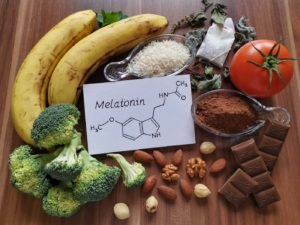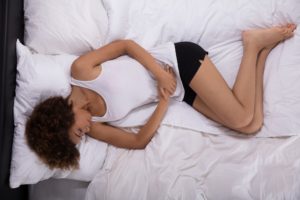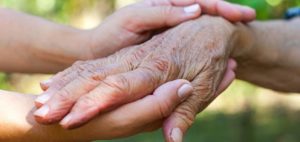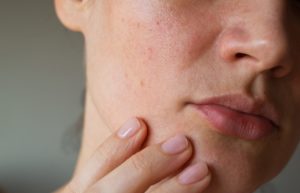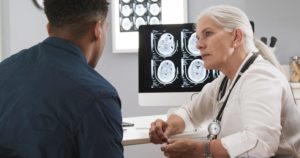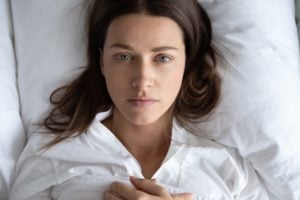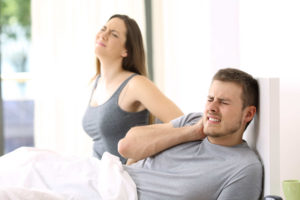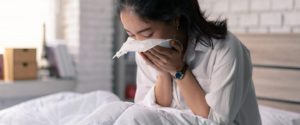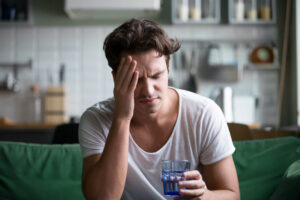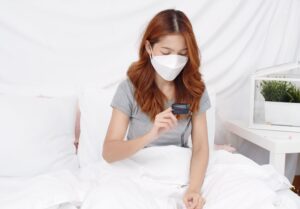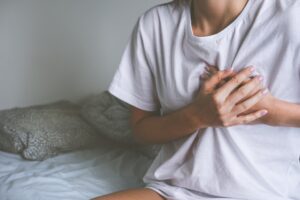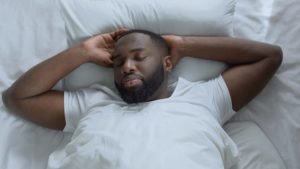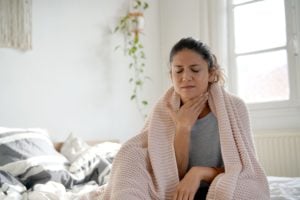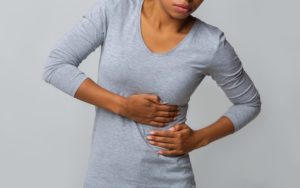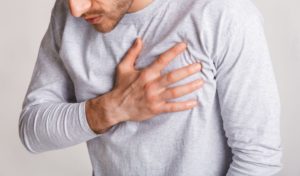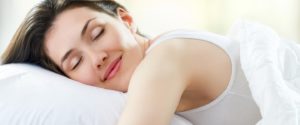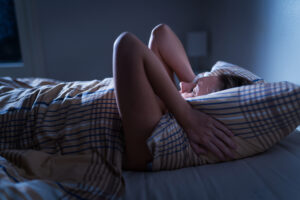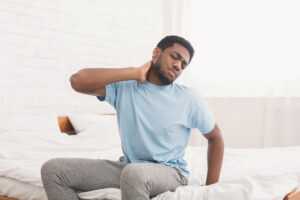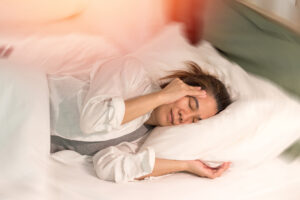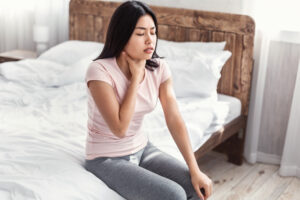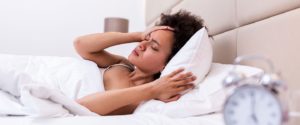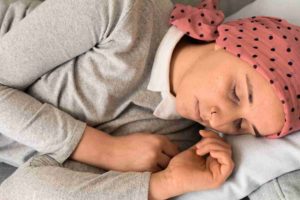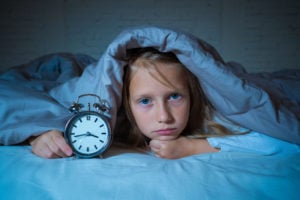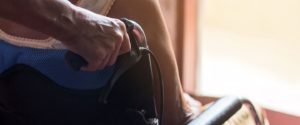Autism and Sleep
Many people with autism spectrum disorder (ASD) experience sleep difficulties, which can impact how they feel and function during the day. Additionally, the sleep problems that children with autism experience can take a toll on their parents and caregivers.
ASD, or autism, is a developmental and neurological disorder that affects about 2% of people in the United States. Although symptoms vary , autism influences how a person communicates and interacts with others. People with autism also tend to have narrowly focused interests and repetitive behaviors. Here, we discuss the link between autism and poor sleep and what diagnosis and treatments might look like for individuals with autism.
What Sleep Problems Are Common With Autism?
Many people with autism experience sleep problems , ranging from difficulty falling and staying asleep to disorders such as insomnia and restless legs syndrome. Sleep problems affect between 50% and 80% of children with autism and about half of adolescents with autism, which is higher than rates for typically developing youth. Nearly 80% of adults with autism experience sleep disturbances.
- Resisting bedtime: Children who have autism may resist bedtime by refusing to get ready for bed or to stay in bed.
- Trouble falling asleep: Adolescents and adults with autism may find it takes longer than 20 minutes to fall asleep when they first go to bed.
- Difficulty staying asleep: Waking up during the night and having trouble getting back to sleep on their own is common in children with autism . In some cases, children may remain awake for hours—talking, playing, or even screaming. Adults may also experience frequent wake-ups that compromise their sleep.
- Restless sleep: Some children with autism may move more than usual during sleep, which can disrupt sleep.
- Waking up very early: People with autism may wake up early in the morning and be unable to get back to sleep.
- Parasomnias: Unusual and unpleasant nighttime experiences—such as nightmares, night terrors, sleepwalking, and bedwetting—may occur in children who have autism.
- Sleep disorders: People with autism may experience sleep disorders, including insomnia, obstructive sleep apnea, restless legs syndrome, and periodic limb movement disorder.
How Autism Can Affect Sleep
The link between autism and sleep disturbances is complex. Researchers believe a number of biological, social, environmental, psychological, and health factors may contribute to sleep problems in people with autism.
Circadian Rhythm Disruptions
Evidence suggests that individuals with autism may experience irregularities or disruptions in their circadian rhythms—the daily rhythms that govern a number of bodily functions, including the sleep-wake cycle. Some researchers have proposed that this is the result of abnormalities in the genes that control the biological clock and the production of the sleep hormone melatonin.
Problems with circadian rhythms may also be connected to the hypersensitivity to sensory stimuli that some people with ASD experience. Light and darkness generally serve as important cues in the sleep-wake cycle — and the presence or absence of certain sounds can also serve as signals that it’s time to wake up or go to sleep. However, individuals with autism who are highly sensitive to light or sound may limit their exposure to these cues, which could inhibit their ability to establish strong circadian rhythms.
Social and Behavioral Features of ASD
In addition to sensory reactivity, a number of other core features of autism have the potential to stand in the way of effective bedtime routines and sleep-facilitating behaviors, including:
- Limited communication skills
- Difficulty understanding social cues
- Attachment to rituals that don’t facilitate sleep
- Disruptive behaviors
Moreover, in children and adults with autism, a cycle can occur in which poor sleep leads to daytime behaviors that, in turn, contribute to continued sleep disturbances.

Environmental Factors
For people with ASD, aspects of their home or sleep environment may also contribute to sleep problems. For example, the sound of sirens or traffic could trigger strong reactions in people with autism and sensitivity to noise. Additionally, caregivers — who already must negotiate many demands — may struggle to establish norms or create an environment that is conducive to sleep, especially if they have other children in their care.
Mental Health Conditions
Many individuals with autism have overlapping mental health conditions that are known to affect sleep.
- Depression: People with ASD are about four times as likely than people without it to experience depression, which has been associated with insomnia and nonrestorative sleep.
- Anxiety: One of the symptoms of anxiety, which is common in individuals with autism, is difficulty falling and staying asleep.
- Attention-deficit/Hyperactivity Disorder (ADHD): More than a quarter of people with ASD have ADHD, which has been linked to a number of sleep problems, including insomnia, parasomnias, night wakings, and restless sleep.
Some medications for mental health conditions may also have side-effects that interfere with sleep.
Health Factors
Children with autism have increased susceptibility to iron deficiency, which is characterized by low ferritin levels in the blood. Some evidence suggests this might contribute to restless sleep.
Additionally, people with autism are at increased risk of having epilepsy and a serious form of acid reflux called gastroesophageal reflux disease (GERD) — both of which may be treated with medications that can negatively affect sleep.
How Are Sleep Problems Diagnosed?
Doctors use a variety of methods to diagnose sleep disturbances in people with autism. To clarify the nature of sleep problems, doctors usually ask autistic individuals or their caregivers questions about the home sleep environment, medical conditions and medications that may affect sleep, bedtime routines, and nighttime behaviors. Caregivers of children with autism might also be asked to maintain a sleep diary.
In some cases, doctors might use a noninvasive technique called actigraphy to diagnose sleep disorders, including circadian rhythm sleep disorders. Actigraphy involves wearing a device similar to a wristwatch that tracks movement, providing relatively accurate measurements of sleep duration.
Certain sleep disorders, such as obstructive sleep apnea, require an in-depth sleep study for diagnosis. Polysomnography is usually performed overnight in a sleep lab and measures breathing, heart rate, movements, and stages of sleep. This type of test, however, may be challenging for adults or children with autism, who may feel especially anxious in unfamiliar environments and respond negatively to unusual sensory inputs. A sleep technician that has experience and training in working with individuals with autism may be required.
How Can Sleep Problems Be Treated?
In most cases, especially with children, doctors prefer to start off treating sleep issues without medication. For example, individuals with autism and their caregivers might be asked to implement sleep hygiene practices, such as limiting screen time before bed and avoiding late afternoon naps. Additionally, doctors might equip parents and caregivers with strategies for discouraging sleep-disturbing habits and behaviors.
Adults with autism who have insomnia may be advised to undergo acceptance and commitment therapy (ACT). This type of therapy shows promise as an alternative to cognitive behavioral therapy for insomnia, which is typically recommended for adults but may not be appropriate or effective for people with autism.
Doctors might also focus on treating any co-occurring medical conditions that might interfere with sleep, such as depression, ADHD, or epilepsy. If any such conditions are treated with medications known to have sedating effects, doctors might recommend taking those medications at bedtime.
If sleep problems do not improve after trying other options, doctors might recommend over-the-counter melatonin or iron supplements for children with ASD.
“Sleep can be challenging in children with autism but healthy sleep habits and consistent bedtimes still remain crucial for improving their sleep.”
Dr. Pranshu Adavadkar, Sleep Physician
What Can You Do at Home to Improve Sleep?
Practicing good sleep hygiene at home is important for everyone, not just people with autism. Good sleep habits are part of any sleep disorder treatment, even when a person is taking medication.
- Sleep timing and bedtime routines: Keep a consistent bedtime and wake up time. Do the same quiet activities before bed every night. Some autistic children may do well with a visual schedule that shows pictures of each step leading up to bedtime.
- Light and electronics: Keep the sleeping area dark, but use a nightlight if necessary. Do not watch television or use electronic devices for at least an hour before bedtime.
- Noise: Keep the bedroom quiet. Carpet and curtains might help absorb noise that could be triggering to autistic individuals.
- Food and other substances: Light snacks are okay, but avoid larger meals for the two hours before bedtime. Also avoid caffeine, which is found in chocolate, coffee, tea, cola, and energy drinks. Adults who use nicotine and alcohol should avoid them in the hours before bedtime.
- Exercise and activity: Get outside in sunlight every day and, if possible, do some type of physical activity.
- Bedding and pajamas: Make sure that sheets, pillow cases, and everything that comes into contact with the skin is comfortable and non-irritating.
- Napping: Avoid long naps, especially later in the afternoon.
Doctors acknowledge that autistic people or their caregivers may be interested in the potential for bedding or mattresses to help with sleep. At this time, research has yet to provide evidence that weighted blankets or particular mattresses reduce sleep disturbances or improve sleep outcomes in people with ASD. However, research on weighted blankets does not show any serious risks, so individuals may wish to try them with caution to see if they help.

Still have questions? Ask our community!
Join our Sleep Care Community — a trusted hub of sleep health professionals, product specialists, and people just like you. Whether you need expert sleep advice for your insomnia or you’re searching for the perfect mattress, we’ve got you covered. Get personalized guidance from the experts who know sleep best.
References
14 Sources
-
Centers for Disease Control and Prevention. (2022, April 7). Adults living with autism spectrum disorder., Retrieved May 11, 2023, from
https://www.cdc.gov/ncbddd/autism/features/adults-living-with-autism-spectrum-disorder.html -
National Institute of Mental Health. (2022). Autism spectrum disorder., Retrieved May 11, 2023, from
https://www.nimh.nih.gov/health/publications/autism-spectrum-disorder -
Hohn, V. D., de Veld, D. M. J., Mataw, K. J. S., van Someren, E. J. W., & Begeer, S. (2019). Insomnia Severity in Adults with Autism Spectrum Disorder is Associated with sensory Hyper-Reactivity and Social Skill Impairment. Journal of autism and developmental disorders, 49(5), 2146–2155.
https://pubmed.ncbi.nlm.nih.gov/30737588/ -
Hyman, S. L., Levy, S. E., Myers, S. M., & Council on Children With Disabilities, Section on Developmental and Behavioral Pediatrics (2020). Identification, Evaluation, and Management of Children With Autism Spectrum Disorder. Pediatrics, 145(1).
https://pubmed.ncbi.nlm.nih.gov/31843864/ -
Halstead, E., Sullivan, E., Zambelli, Z., Ellis, J. G., & Dimitriou, D. (2021). The treatment of sleep problems in autistic adults in the United Kingdom. Autism: the international journal of research and practice, 25(8), 2412–2417
https://pubmed.ncbi.nlm.nih.gov/33966490/ -
Cortese, S., Wang, F., Angriman, M., Masi, G., & Bruni, O. (2020). Sleep Disorders in Children and Adolescents with Autism Spectrum Disorder: Diagnosis, Epidemiology, and Management. CNS drugs, 34(4), 415–423.
https://pubmed.ncbi.nlm.nih.gov/32112261/ -
Sulks, S. (2023, May). Sleep problems in children. Merck Manual Consumer Version., Retrieved May 11, 2023, from
https://www.merckmanuals.com/home/children-s-health-issues/behavioral-problems-in-children/sleep-problems-in-children -
Lawson, L. P., Richdale, A. L., Denney, K., & Morris, E. M. J. (2023). ACT-i, an insomnia intervention for autistic adults: a pilot study. Behavioral and cognitive psychotherapy, 51(2), 146–163.
https://pubmed.ncbi.nlm.nih.gov/36537291/ -
Sharkey, K. (2023, May 10). Advanced sleep-wake phase disorder. In C. Goldstein (Ed.). UpToDate., Retrieved May 11,2023, from
https://www.uptodate.com/contents/advanced-sleep-wake-phase-disorder -
Wiessman, L. (2021, October 27). Autism spectrum disorder in children and adolescents: pharmacologic interventions. In D. Blake (Ed.). UpToDate., Retrieved May 11, 2023, from
https://www.uptodate.com/contents/autism-spectrum-disorder-in-children-and-adolescents-pharmacologic-interventions -
Esposito, D., Belli, A., Ferri, R., & Bruni, O. (2020). Sleeping without Prescription: Management of Sleep Disorders in Children with Autism with Non-Pharmacological Interventions and Over-the-Counter Treatments. Brain sciences, 10(7), 441.
https://pubmed.ncbi.nlm.nih.gov/32664572/ -
Augustyn, M. (2023, April 19). Autism spectrum disorder in children and adolescents: terminology, epidemiology, and pathogenesis. In D. Blake (Ed.). UpToDate., Retrieved May 18, 2023, from
https://www.uptodate.com/contents/autism-spectrum-disorder-in-children-and-adolescents-terminology-epidemiology-and-pathogenesis -
Hudson, C. C., Hall, L., & Harkness, K. L. (2019). Prevalence of Depressive Disorders in Individuals with Autism Spectrum Disorder: a Meta-Analysis. Journal of abnormal child psychology, 47(1), 165–175.
https://pubmed.ncbi.nlm.nih.gov/29497980/ -
Posar, A., & Visconti, P. (2019). Long-term outcome of autism spectrum disorder. Turk pediatri arsivi, 54(4), 207–212.
https://pubmed.ncbi.nlm.nih.gov/31949411


